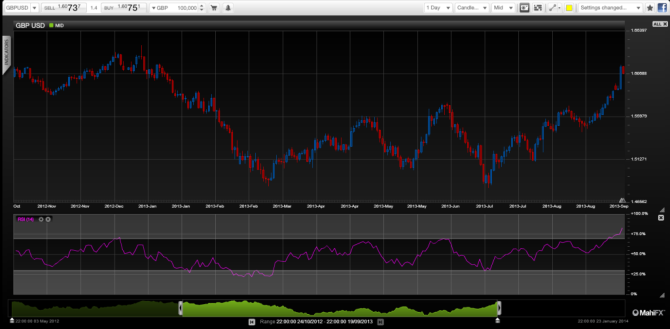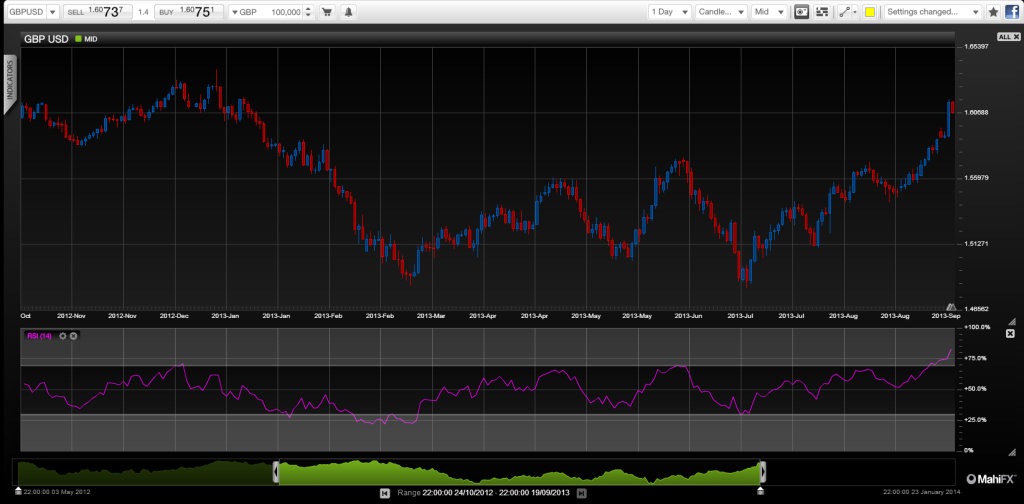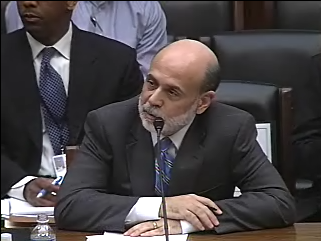The US Federal Reserve bottled it on tapering its quantitative easing programme, which was positive news for risk currencies and risk assets and the relief will no doubt support rallies in these markets, but the Fed has merely kicked the can down the road.
Fears over the strength of the US recovery and worries about rising real interest rates – issues regularly highlighted in this column – swayed the Fed’s hand over tapering. Yet the markets had accepted as given a $10 billion reduction to $75 billion a month in its quantitative easing programme.
By Justin Pugsley, Markets Analyst MahiFX
Follow MahiFX on twitter
But for risk currencies such as GBP, AUD, NZD and emerging market currencies the news should support relief rallies. Though looking over-bought on the RSI, GBP/USD could be set to regain levels of 1.6500-1700 with the UK housing market stirring and with brighter prospects for the economy, which for the time being are papering over the very large current account and budget deficits.
Gold, unsurprisingly, had a good day on the Fed’s announcement, but the upside could be limited in the short- to medium-term by factors such as brewing economic problems in China and India, which are both big buyers of the physical metal. Over the long-term, from the perspective of the charts, the trend still looks downward.
GBP/USD rallies – a good day for risk currencies

Tapering will probably be the next Fed Chairman/woman’s problem
But in the meantime, the Fed is continuing its massive quantitative easing programme at the same pace, which will continue to distort financial and commodity markets, whilst doing little to stimulate the real economy – if some recent research is to be believed.
However, the Fed will eventually have to end its QE policy as it risks fuelling financial bubbles and reckless risk taking and also has to recognise that its withdrawal will be disruptive to the markets it has so distorted. The longer that decision is delayed the harder it will be to withdraw.
Structural factors translate into lower economic growth
Consider that the US and other developed countries all face ageing populations, which means household consumption, the main growth driver will naturally decline. The other factor is technological disruption, which is destroying many traditional middle income jobs and putting downward pressure on wages. These are issues which society has to try and manage and cannot be solved by QE.
Developed countries likely face many years of low GDP growth due to these structural factors and leaving the markets to their own devices would eventually see very low interest rates and Treasury bond yields anyway as seen in Japan.
For the risk currencies, an upcoming flash point are the wrangles over the US deficit ceiling with various camps in the Republican and Democratic parties viscerally opposed to each others’ views making for another set of raucous negotiations with the potential to un-nerve markets. It’s likely that the Fed’s tapering decision was in part influenced by this.

